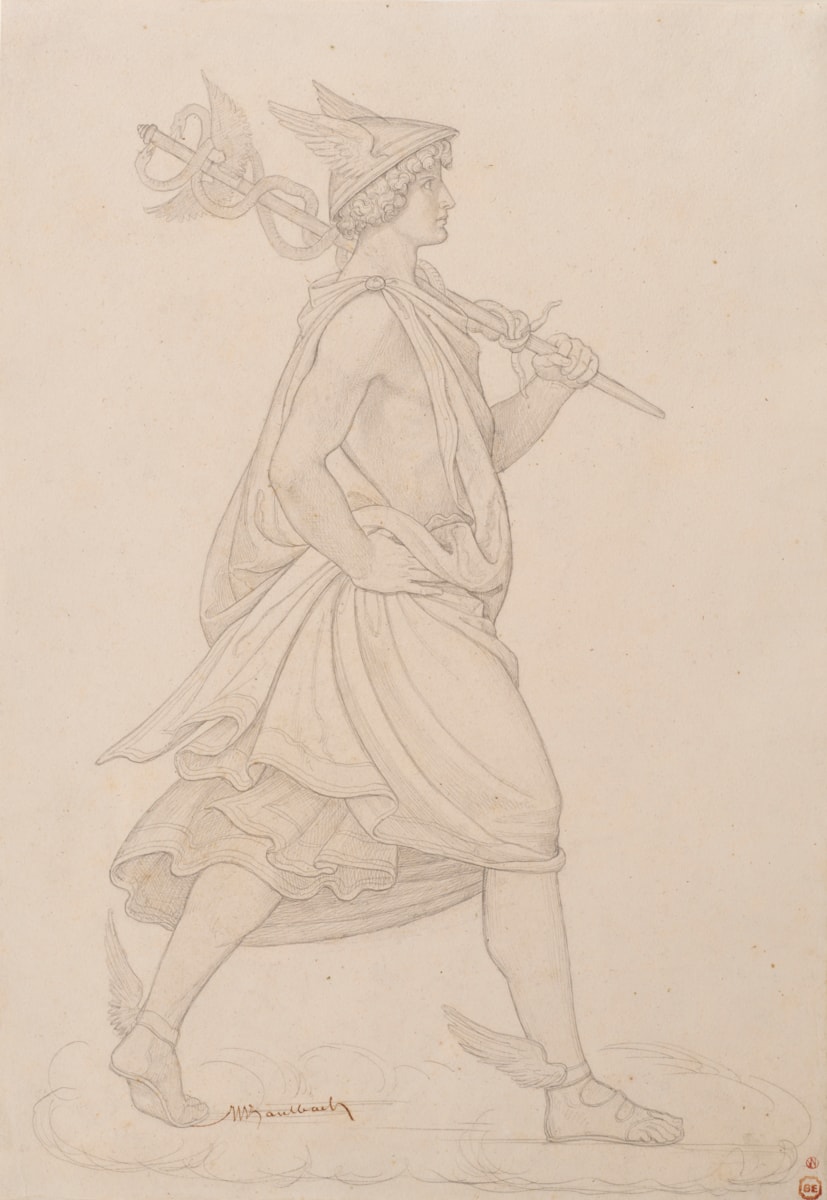
Wilhelm von Kaulbach (Arolsen 1805 - Munich 1874)
Hermes, messenger of the Gods, c. 1845
Description:
signed: WKaulbach
graphite
370 x 255 mm
Provenance:
Gustav Engelbrecht (1848-1923), Hamburg [L.1148]
his sale, Amsler & Ruthardt, Berlin: 28-29 October 1924, Lot 248
Dr Franz Winzinger (1910-1983), Regensburg [L.2600a]
Private collection, London
Literature
Dreiundzwanzigste Ausstellung der Berliner Secession. Zeichnende Künste, exhib. cat., no. 23, Nov–Dec. 1911, no. 502
Note:
From an early age Wilhelm von Kaulbach's talents were evident. After just one year at the Düsseldorf Academy, he was promoted from the elementary class to the senior class. With the support of Peter von Cornelius, Kaulbach was recommended for several state scholarships and in 1826, at Cornelius’s instigation, Kaulbach travelled to Munich to assist in the fresco decoration of the Herzog Max-Palais. Shortly after, King Ludwig I appointed Kaulbach court painter and his ascent continued, fast cementing him as one of the most respected and industrious history painters in Germany.
This figure of Hermes in profile is a working drawing for a now-destroyed frieze-like composition on the staircase in the Neues Museum in Berlin, one of the most important commissions of Kaulbach’s entire career, on which he worked between 1845 and 1865. Kaulbach would have signed the sheet, likely upon giving it away to a favoured visitor, a practice that is recorded by Friedrich Overbeck’s biographer, Anna Howitt, in her description of a visit to Kaulbach’s studio.
The first known owner of the drawing was the Hamburg collector Gustav Engelbrecht who began acquiring drawings around 1892. While in Engelbrecht’s collection the drawing was exhibited at the Berlin Secession winter exhibition of 1911. Following Engelbrecht’s death his collection was dispersed by the auctioneers Amsler & Ruthardt in Berlin, where the drawing was described as: ‘Magnificent, carefully executed pencil drawing. A work of unusually good quality’ [trans].
